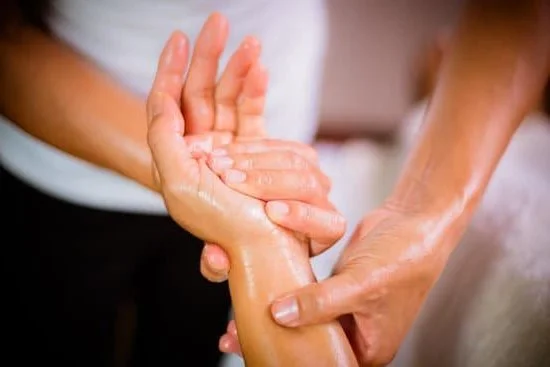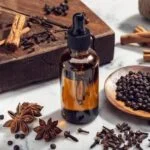Aromatherapy has been used for centuries as a natural way to enhance both physical and emotional well-being. One popular method of incorporating aromatherapy into your self-care routine is through the use of aromatherapy massage oils. In this article, we will explore the benefits of aromatherapy massage oil, understand different types of aromatherapy oils, and provide a step-by-step guide on how to use them effectively.
Aromatherapy massage oils are a wonderful way to relax, unwind, and enjoy the therapeutic benefits of essential oils. Whether you’re looking to alleviate stress, ease muscle tension, or simply pamper yourself, aromatherapy massage oils can be an excellent addition to your wellness regimen.
To get the most out of your aromatherapy experience, it’s important to understand the different types of essential oils commonly used in aromatherapy massage as well as how to use them safely and effectively. In the following sections, we will discuss the various benefits of aromatherapy massage oil and provide practical tips for using them at home or in a professional setting.
Whether you’re new to aromatherapy or looking to expand your knowledge, this guide will help you make the most out of your aromatherapy massage oil experience.
Benefits of Aromatherapy Massage Oil
Aromatherapy massage oils offer a wide range of benefits for both the mind and body. When used in conjunction with massage techniques, these oils can enhance relaxation, relieve stress, and promote overall well-being. In this section, we will explore the various benefits of using aromatherapy massage oil and how it can positively impact your physical and mental health.
Physical Benefits
Aromatherapy massage oil is known to have physical benefits such as reducing muscle tension, alleviating aches and pains, improving circulation, and promoting better sleep. The essential oils in the massage oil penetrate the skin and enter the bloodstream, providing therapeutic effects that aid in pain relief and relaxation. For example, lavender oil is often used for its calming properties, while peppermint oil is known for its ability to soothe sore muscles.
Mental and Emotional Benefits
In addition to its physical benefits, aromatherapy massage oil also offers mental and emotional benefits. The inhalation of essential oils through aroma therapy has been shown to positively impact mood, reduce anxiety, uplift spirits, and even help with cognitive function. Using relaxing scents such as chamomile or bergamot in aromatherapy massage can help calm the mind and reduce stress levels.
Skin Nourishment
Many aromatherapy massage oils are made with carrier oils that are rich in vitamins and antioxidants, which provide nourishment to the skin. These oils can improve skin elasticity, tone complexion, and hydrate dry skin. When applied during a massage session, they not only enhance the sensory experience but also leave the skin feeling soft and supple.
Overall, incorporating aromatherapy massage oil into your self-care routine can have numerous positive effects on your well-being – both physically and mentally. Understanding these benefits can help you make informed decisions when selecting an appropriate combination of essential oils for your next aromatherapy massage session.
Understanding Different Types of Aromatherapy Oils
Aromatherapy oils, also known as essential oils, are natural plant extracts that have been used for centuries for their therapeutic and medicinal properties. There are a wide variety of aromatherapy oils available, each with its own unique scent and healing properties. Understanding the different types of aromatherapy oils can help you choose the right one for your needs.
Popular Aromatherapy Oils
Some popular aromatherapy oils include lavender, tea tree, eucalyptus, peppermint, and chamomile. Lavender is known for its calming and relaxing properties, while tea tree has antibacterial and antifungal properties. Eucalyptus is often used for respiratory issues, while peppermint is invigorating and can help with headaches. Chamomile is soothing and great for use before bedtime.
How to Choose the Right Aromatherapy Oil
When choosing an aromatherapy oil, it’s important to consider your specific needs and desired outcomes. For example, if you’re looking to relax and unwind after a long day, you may opt for lavender or chamomile oil. On the other hand, if you’re looking to boost your energy levels or clear your sinuses, eucalyptus or peppermint oil may be more suitable.
Quality and Purity
It’s crucial to select high-quality, pure essential oils when using them for aromatherapy massage. Look for oils that are labeled as “100% pure” or “therapeutic grade,” as these are less likely to contain synthetic additives or fillers. Additionally, always perform a patch test before using a new essential oil to ensure that you don’t have any adverse reactions.
Understanding the different types of aromatherapy oils can enhance your experience with aromatherapy massage oil. Whether you’re looking to relax, energize, or alleviate specific ailments, there’s an essential oil that can cater to your needs when used in conjunction with proper techniques on how to use aromatherapy massage oil effectively.
Step-by-Step Guide on How to Use Aromatherapy Massage Oil
Aromatherapy massage oil is a popular way to enhance the therapeutic benefits of massage. Using the right technique can help you experience relaxation and relief from stress, pain, and muscle tension. Here is a step-by-step guide on how to use aromatherapy massage oil effectively.
First, choose the right essential oil for your needs. Different essential oils have different benefits, so it’s important to select one that suits your purpose. For example, lavender oil is known for its calming effects, while peppermint oil can help soothe sore muscles.
Next, dilute the essential oil with a carrier oil. Most essential oils are too potent to be applied directly to the skin, so they need to be mixed with a carrier oil like jojoba, almond, or coconut oil. The standard ratio is 5-15 drops of essential oil per ounce of carrier oil, but this may vary depending on your needs and the specific essential oil you are using.
Once you have your diluted aromatherapy massage oil ready, it’s time to apply it during your massage. Begin by warming the oil in your hands before applying it to the skin. Use slow, rhythmic movements during the massage to promote relaxation and allow the aroma of the essential oils to enhance the overall experience.
| Essential Oil | Recommended Benefits |
|---|---|
| Lavender | Calming effects and stress relief |
| Peppermint | Soothes sore muscles and reduces inflammation |
| Eucalyptus | Congestion relief and respiratory support |
Choosing the Right Carrier Oil for Aromatherapy Massage
Aromatherapy massage oils are a wonderful addition to any massage session and offer a range of benefits. When it comes to choosing the right carrier oil for aromatherapy massage, it’s important to consider a few key factors. The carrier oil serves as the base for the essential oils, helping to dilute them and carry them onto the skin. Some popular carrier oils include sweet almond oil, coconut oil, jojoba oil, and grapeseed oil.
One of the most important considerations when choosing a carrier oil is the client’s skin type. For clients with sensitive skin, it’s best to opt for light and non-greasy carrier oils such as sweet almond or apricot kernel oil.
For clients with dry skin, heavier and more nourishing oils like avocado or sesame seed may be more suitable. Additionally, some carrier oils have their own therapeutic properties – for example, coconut oil is known for its antimicrobial and moisturizing effects.
When using aromatherapy massage oil, it’s also essential to keep in mind any nut allergies that your clients may have. Many carrier oils are derived from nuts or seeds, so if allergies are a concern for your clients, it’s best to choose nut-free options such as sunflower seed oil or olive oil. Understanding your client’s preferences and needs will help you select the perfect carrier oil for an effective and enjoyable aromatherapy massage experience.
Lastly, always ensure that you are purchasing high-quality carrier oils from reputable sources to guarantee their purity and efficacy in carrying essential oils during your aromatherapy massages.
| Carrier Oil | Best For |
|---|---|
| Sweet Almond Oil | Sensitive Skin |
| Coconut Oil | Antimicrobial Properties |
| Grapeseed Oil | All Skin Types |
| Jojoba Oil | Oily Skin |
Precautions and Safety Tips When Using Aromatherapy Massage Oil
When using aromatherapy massage oil, it is important to keep in mind some precautions and safety tips to ensure a safe and enjoyable experience. Here are some key points to consider:
1. Dilution: It is crucial to always dilute aromatherapy oils before applying them to the skin, as they are highly concentrated. Most essential oils should be diluted with a carrier oil before use, such as almond oil, coconut oil, or jojoba oil. Follow recommended dilution ratios to avoid skin irritation or sensitization.
2. Patch Test: Before using any new aromatherapy massage oil, it is recommended to perform a patch test on a small area of skin to check for any allergic reactions or sensitivities. Apply a small amount of diluted oil and wait 24 hours to see if any redness, itching, or irritation occurs.
3. Pregnancy and Medical Conditions: Certain essential oils should be avoided during pregnancy or by individuals with specific medical conditions. It is important to consult with a qualified aromatherapist or healthcare professional before using aromatherapy massage oil if you are pregnant, nursing, have allergies, asthma, epilepsy, high blood pressure, or other health concerns.
4. Photosensitivity: Some essential oils can cause photosensitivity, increasing the skin’s sensitivity to sunlight and UV rays. Citrus oils such as lemon, lime, grapefruit, and bergamot are known for their photosensitizing effects. Avoid exposure to direct sunlight after applying these oils to the skin.
By following these precautions and safety tips when using aromatherapy massage oil, you can enjoy the therapeutic benefits of essential oils while ensuring a safe and positive experience.
DIY Aromatherapy Massage Oil Recipes
Making your own aromatherapy massage oil can be a fun and creative way to personalize your self-care routine. By creating your own blends, you have the freedom to tailor the scent and therapeutic properties to your specific needs. Here are some simple DIY aromatherapy massage oil recipes that you can easily make at home.
For a relaxing and calming massage oil, mix 2 ounces of carrier oil, such as sweet almond or jojoba oil, with 5-7 drops of lavender essential oil. Lavender is known for its stress-relieving and soothing properties, making it an excellent choice for unwinding after a long day.
If you’re looking for an energizing and invigorating blend, try combining 2 ounces of carrier oil with 5-7 drops of peppermint essential oil. Peppermint has a refreshing and uplifting aroma that can help stimulate the senses and improve mental clarity.
For a romantic and sensual massage experience, create a blend using 2 ounces of carrier oil and 5-7 drops of ylang ylang essential oil. Ylang ylang is renowned for its aphrodisiac properties and its ability to promote feelings of relaxation and intimacy.
When making your own aromatherapy massage oils, it’s important to remember that essential oils are highly concentrated and should be diluted in a carrier oil before applying them to the skin. Always perform a patch test on a small area of skin to check for any potential allergic reactions before using the blend for a full body massage. With these simple recipes, you can easily customize your aromatherapy massage oils to cater to your specific wellness goals and preferences.
Conclusion and Final Tips for Using Aromatherapy Massage Oil
In conclusion, incorporating aromatherapy massage oil into your self-care routine can be a beneficial and enjoyable way to enhance relaxation and promote overall well-being. The use of essential oils in massage has been shown to reduce stress, alleviate muscle tension, and improve mood. Whether you choose to buy pre-made blends or create your own DIY recipes, it’s important to understand the different types of aromatherapy oils and their specific benefits.
When using aromatherapy massage oil, it’s essential to follow a step-by-step guide to ensure its proper application. This includes diluting the essential oils with a carrier oil, performing a patch test first, and applying the oil using gentle and soothing massage techniques. By taking these precautions, you can avoid adverse reactions and safely enjoy the therapeutic effects of aromatherapy.
Finally, when choosing the right carrier oil for aromatherapy massage, consider your skin type and personal preferences. Some popular carrier oils include coconut oil, jojoba oil, sweet almond oil, and grapeseed oil. With proper knowledge of aromatherapy oils and safety tips in mind, you can confidently incorporate aromatherapy massage oil into your self-care routine for a truly relaxing experience.
Frequently Asked Questions
How Do You Use Aromatherapy Oil?
Aromatherapy oils can be used in a variety of ways, including through inhalation, topical application, and even ingesting under the guidance of a qualified professional. Inhalation can be done using a diffuser or simply by adding a few drops to hot water for steam inhalation.
How Do You Use Aromatherapy Body Oils?
Aromatherapy body oils are typically applied to the skin through massage or as part of a skincare routine. These oils can be diluted with carrier oils and then applied directly to the skin, allowing for absorption and potential therapeutic benefits.
How Do You Use Essential Massage Oils?
Essential massage oils are used during massages to promote relaxation, rejuvenation, and healing. The oils are typically applied directly to the skin and then massaged in using various techniques. This allows for both physical and emotional benefits from the aromatherapy properties of the essential oils.

Are you looking for a natural way to improve your health and wellbeing?
If so, aromatherapy may be the answer for you.





